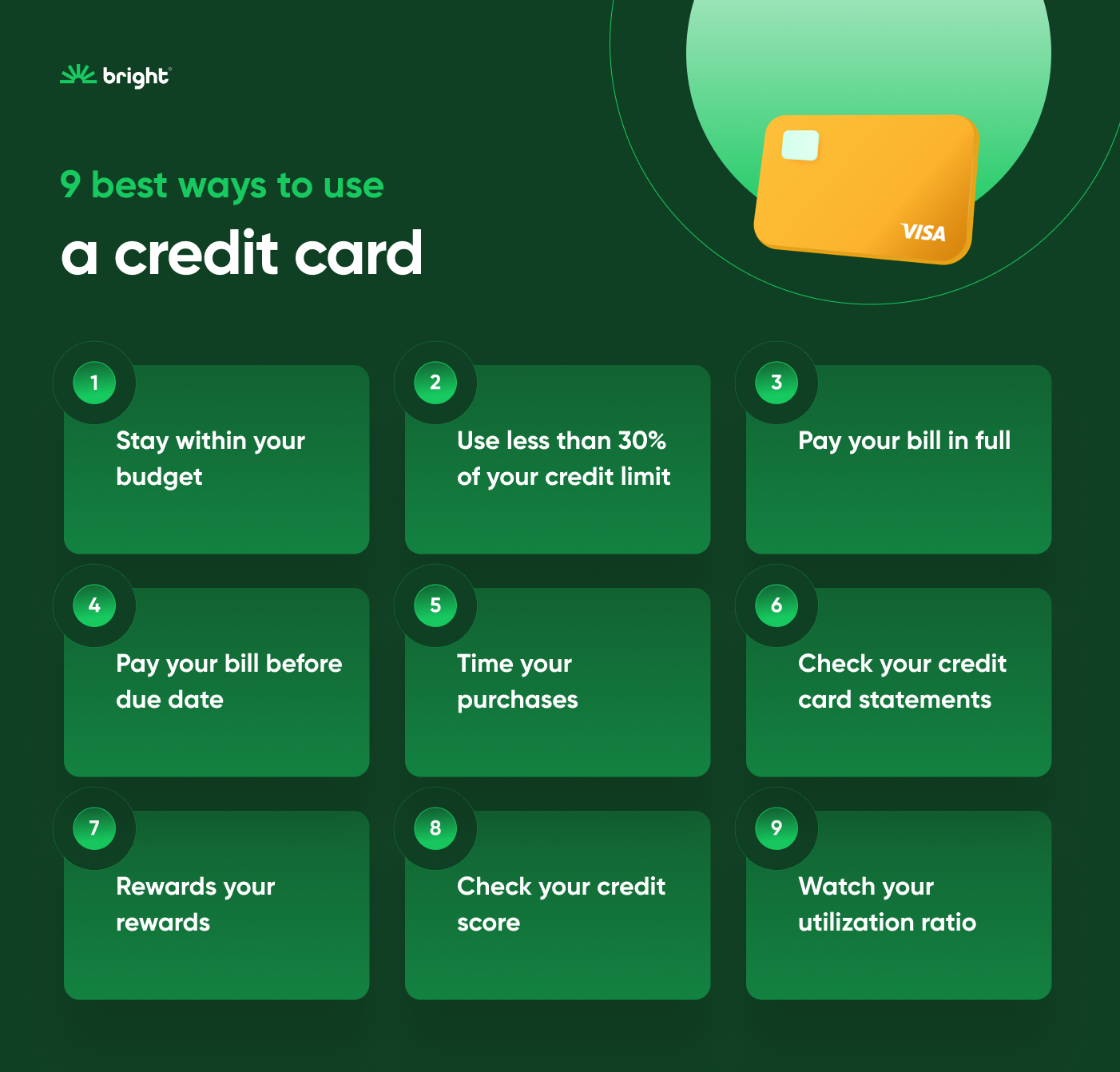.png)
Wohoo!
You are subscribed to our blog newsletter
Awesome!12 better ways to use a credit card
Credit cards come with undeniable perks - as long as we’re using them sensibly.
There’s a reason credit cards are a big part of modern life: they’re easy to use, they add extra purchasing power, and they offer the opportunity to build a healthy credit score.
Many also offer reward programs, earning you cash back or redeemable points. They’re exceptional tools, great for everyday use - as long as we’re using them sensibly.
Here are dozen tips on how to be smart about using credit cards:
1. Stay in your budget
Set a realistic budget on what you can spend and pay off your balance, or as much as you can, before the end of your card’s monthly billing cycle. A credit card is great for shopping conveniently - not for buying things you can’t afford.
2. Pay your bills in full
Your credit card requires you to pay a percentage of your outstanding balance each month. They call it the “minimum due.” But in reality, the “minimum due” only covers the interest you’ve been charged, not any of the amount you’ve actually spent.
When you pay the “minimum due,” you’re not actually paying off your debt, and month after month, interest fees really add up. When you pay your bill in full before the end of the billing cycle, you avoid paying any interest fees - and keep more credit available for you to use.
3. Don't wait for the due date
If you can, pay your card’s bill before the due date. Putting off your payment until the last day can sometimes be met with delays, because of transfer times or other processing, resulting in your payment posting late.
Paying before the due date can boost your credit score and save you from late charges.
4. Time your purchases
Each credit card has its own billing cycle. When you make a purchase at the start of your billing cycle, you’ll have the rest of the cycle to pay it off, interest-free.
Time your purchases so you have more days to pay it off.
5. Check your credit card statements
At the end of each billing cycle, when your card issuer sends you a statement, check for any errors. If you find any purchases you didn’t make or activity you don’t recognize, report them to your card issuer right away and file a dispute.
6. Use your card at trusted places
Minimize the risk of fraud by using your card at trusted retailers or businesses only. Collect paper receipts when they’re available, to prevent others from copying your numbers.
7. Redeem your rewards
If your credit card has a rewards program, take full advantage of it. Use the points or cash back you earn by spending it on targeted purchases - things you actually need.
8. Avoid fees when you can
Some cards charge an unavoidable annual fee, but other fees are up to you. Use your card wisely to avoid these charges:
- Late fees are charged when you pay after your due date. Pay your bill before the end of its billing cycle, and you’ll avoid late fees.
- Interest fees are charged when you carry a balance from month to month. Your card’s APR (“annual percentage rate) is the interest rate you'll pay on the balances you’re carrying. Paying your bill in full each month avoids any interest charges.
- Foreign transaction fees are fees charged when making purchases outside the U.S. If you’re traveling outside the US, stick to the credit card with the lowest foreign transaction fees.
9. Limit the number of cards you carry
Opening too many credit card accounts can be a slippery slope. Multiple cards can complicate tracking payments and billing cycles. It’s also easier to go over budget, making purchases across multiple cards.
10. Find cards with competitive rates
Credit card issuers are required by law to disclose interest rates and other fees. Educate yourself before applying. Cards with no annual fee are a good place to start. Shop around for lower interest rates, too, as well as reward programs that make sense for you.
11. Watch your credit score
Small fluctuations are normal (within 5 to 10 points). If you see larger fluctuations, check your credit reports and your card statements to see what’s triggered the change.
12. Don't get too close to your limit
The percentage of available credit you use is called your credit utilization ratio. The lower this is, the better your credit score. To keep your score healthy, use less than 30 percent of your limit at all times.
Use your cards sensibly, and enjoy the flexibility, convenience and extra benefits they offer.
Use Bright to manage payments
Your personalized Bright Plan makes your card payments for you - always on time and always optimized to save you money. No more late fees. No more complicated math. No more juggling balances.
It's a smarter, faster way to manage your card debts, powered by MoneyScience™, a new, patented system built on 34 algorithms and tested by over 55,000 users.
If you don’t have it yet, download the Bright app from the AppStore or Google Play. Connect your bank account and your cards and set a monthly goal. Bright analyzes your finances and makes your card payments for you, based on what you can afford and what saves you more money.
Recommended Readings:
Avinash is an Engineering graduate from IISc and BITS-Pilani. He is an experienced engineer and big data architect.









